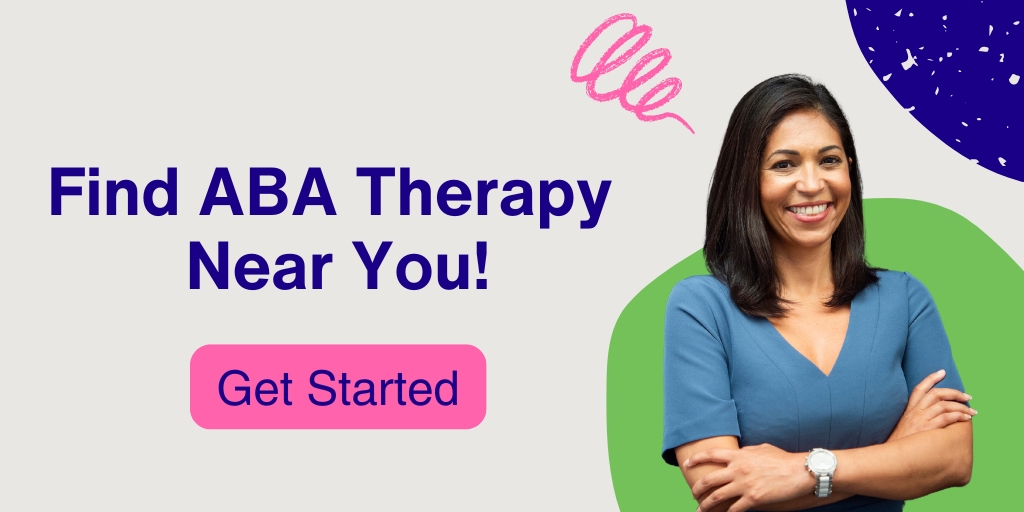
Applied Behavior Analysis (ABA) therapy is one of the most widely recognized interventions for individuals with autism spectrum disorder (ASD). Rooted in the science of learning and behavior, ABA aims to foster helpful behaviors and reduce those that may hinder development or safety.
Despite its evidence-based foundation, ABA therapy is surrounded by misconceptions and controversies that can confuse parents, caregivers, and professionals. This article seeks to debunk common misconceptions about Terapia ABA, address valid criticisms, and provide a compassionate, balanced perspective that respects the diverse experiences within the autism community.
What is ABA Therapy?
Terapia ABA is a structured, evidence-based approach that uses principles of behavior analysis to teach new skills and modify behaviors. It focuses on understanding how behaviors are influenced by the environment, employing techniques like positive reinforcement to encourage desired actions.
For individuals with autism, ABA often targets communication, social skills, and daily living abilities, tailored to each person’s unique needs. Delivered by trained professionals, such as Board-Certified Behavior Analysts (BCBAs) or Registered Behavior Technicians (RBTs), ABA can occur in homes, schools, or clinics.
While ABA has helped many individuals achieve greater independence, it is not without controversy. Some praise its effectiveness, while others, including autistic advocates, raise concerns about its methods and goals. Below, we address seven common misconceptions about Terapia ABA, followed by a discussion of its criticisms and a balanced perspective.
Common Misconceptions About ABA Therapy
Misconceptions about ABA often stem from outdated practices, misinformation, or differing perspectives on its goals. Here, we debunk seven prevalent myths using evidence from reputable sources.
Myth 1: ABA Therapy Isn’t Backed by Science
A widespread misconception is that ABA lacks scientific support. In reality, ABA is grounded in decades of research and is recognized as an evidence-based practice by the U.S. Surgeon General and the American Psychological Association (APA).
One study published in the National Library of Medicine shows that consistent ABA therapy can significantly improve intellectual, social, and language skills in children with autism. Its rigorous scientific foundation makes it a cornerstone of autism intervention.
Myth 2: ABA Is Only Effective for People with Autism
Many believe ABA is exclusively for autism, but its principles are far broader. ABA is used in education to enhance learning, in sports psychology to improve performance, in health and fitness to promote healthy habits, and in substance abuse treatment to support recovery.
Based on the universal science of human behavior, ABA’s techniques are adaptable to various populations and settings, not just autism.
Myth 3: ABA Therapy Encourages Bribing Children
Critics often claim ABA relies on bribery to manipulate behavior. However, ABA uses positive reinforcement, which is basically rewarding a behavior after it occurs to increase its frequency: Unlike bribery, which offers rewards before a behavior to entice action. For example, praising a child for completing a task reinforces the behavior naturally, fostering intrinsic motivation over time.
Myth 4: Anyone Can Provide ABA Therapy
Some assume anyone can deliver ABA therapy, but this is false. Formal ABA therapy requires credentialed professionals, such as BCBAs, Board Certified Assistant Behavior Analysts (BCaBAs), or RBTs, who undergo extensive training and adhere to ethical guidelines set by the Behavior Analyst Certification Board (BACB). This ensures safe and effective therapy delivery.
Myth 5: ABA Therapy Encourages Punishing Children
A lingering misconception is that ABA relies on punishment. While early ABA in the 1960s, pioneered by Dr. O. Ivar Lovaas, included aversive methods like electric shocks, these are now widely condemned and abandoned.
Modern ABA emphasizes positive reinforcement, rewarding desired behaviors and teaching alternatives to undesirable ones, as punishment is both unethical and ineffective.
Myth 6: ABA Only Addresses “Behavior Issues”
ABA is often seen as solely targeting problematic behaviors like tantrums. In truth, ABA addresses any observable behavior, including positive ones like communication, social interaction, and self-care. For instance, ABA might teach a child to initiate conversations or follow daily routines, aiming to enhance overall quality of life and independence.
Myth 7: ABA Therapy Can “Cure” Autism
Perhaps the most harmful myth is that ABA aims to “cure” autism. Autism is not a disease to be cured; it’s a neurodevelopmental condition. ABA focuses on helping individuals develop skills for communication, socialization, and daily living to foster independence, not to eliminate autism. Early intervention can lead to significant progress, but it respects the individual’s neurodiversity.
| Myth | Misconception | Debunking |
| 1 | ABA isn’t backed by science | It’s supported by decades of research; recognized by the U.S. Surgeon General and APA |
| 2 | ABA is only for autism | It’s used in education, sports, health, and more, based on universal behavior principles |
| 3 | ABA encourages bribery | It uses positive reinforcement, not bribery, to build intrinsic motivation |
| 4 | Anyone can provide ABA | Requires credentialed professionals (BCBA, BCaBA, RBT) |
| 5 | ABA encourages punishment | Modern ABA avoids punishment, focusing on positive reinforcement |
| 6 | ABA only addresses behavior issues | Targets all behaviors, including communication and daily living skills |
| 7 | ABA can cure autism | No cure for autism; ABA enhances skills for independence |
Criticisms and Concerns About ABA Therapy
While debunking misconceptions clarifies what ABA is, addressing criticisms is equally essential. Many concerns come from autistic individuals, advocates, and research highlighting potential harms.
Historical Use of Aversive Methods
ABA’s history includes controversial practices, such as electric shocks used in the 1960s by Dr. Lovaas during Discrete Trial Training. These aversive methods are now considered unethical and are no longer part of standard ABA practice. However, their legacy fuels distrust, with critics arguing that the field’s past casts a shadow over its present.
Encouraging Masking and Mental Health Impacts
A significant criticism is that ABA can promote “masking,” where autistic individuals suppress natural behaviors like stimming or avoiding eye contact to appear neurotypical. This can lead to mental health challenges, including anxiety, depression, and suicidal ideation.
According to a 2021 research study in the National Library of Medicine, high levels of masking in autistic and nonautistic adults are associated with poorer mental health outcomes. However, critics argue that ABA’s focus on “normalizing” behaviors may prioritize societal expectations over the individual’s well-being.
Correlation with PTSD
Some studies suggest a link between ABA and increased post-traumatic stress disorder (PTSD) symptoms. A 2018 study found that individuals exposed to ABA were 86% more likely to meet PTSD diagnostic criteria, with nearly half showing symptoms at “extreme levels of severity.”
This raises concerns about the long-term psychological impact of certain ABA practices, particularly when they are rigid or overly controlling.
Personal Experiences of Harm
Autistic individuals who underwent ABA as children often share experiences of trauma, feeling forced to conform or suppress their identity. For example, some report being restrained or discouraged from stimming, a coping mechanism, leading to shame or distress.
Ido Kedar, in his memoir Ido in Autismland, describes feeling trapped by traditional ABA, unable to express his understanding due to motor challenges. These accounts underscore the need for ABA to prioritize the individual’s autonomy and emotional well-being.
Balancing Perspectives: Ethical Implementation and Alternatives
Despite these criticisms, many families and professionals report positive outcomes from ABA when it’s delivered ethically. For individuals with severe autism, ABA can significantly improve communication, reduce harmful behaviors like self-injury, and foster independence.
Dannell Roberts, PhD, BCBA-D, notes that ABA is not harmful when implemented by trained therapists using positive reinforcement, focusing on independence rather than “curing” autism.
The key to ethical ABA lies in its implementation:
- Positive Reinforcement: Prioritize rewards over punishment.
- Individualization: Tailor goals to the person’s needs and preferences.
- Respect for Neurodiversity: Avoid forcing conformity; embrace natural behaviors like stimming when they’re not harmful.
- Involvement: Include the individual in goal-setting when possible.
ABA is not the only option. Alternative therapies, such as occupational therapy, speech therapy, or the TEACCH approach, can complement or replace ABA based on the individual’s needs. In some regions, limited insurance coverage for alternatives can restrict access, highlighting the need for broader options.
Conclusión
ABA therapy is a complex intervention with both supporters and critics. By debunking misconceptions, such as claims that it lacks scientific backing or aims to “cure” autism, we can better understand its role. However, valid criticisms, including concerns about masking, PTSD, and historical practices, must be addressed to ensure ethical implementation.
Families should explore all interventions, prioritizing those that respect the individual’s autonomy and neurodiversity. With informed decision-making and compassionate care, ABA and other therapies can empower individuals with autism to thrive.
Call Applied ABC at 866-352-5010 to speak with our dedicated experts or submit our online application form. Together, we can create a supportive and nurturing environment that fosters meaningful progress and growth.




